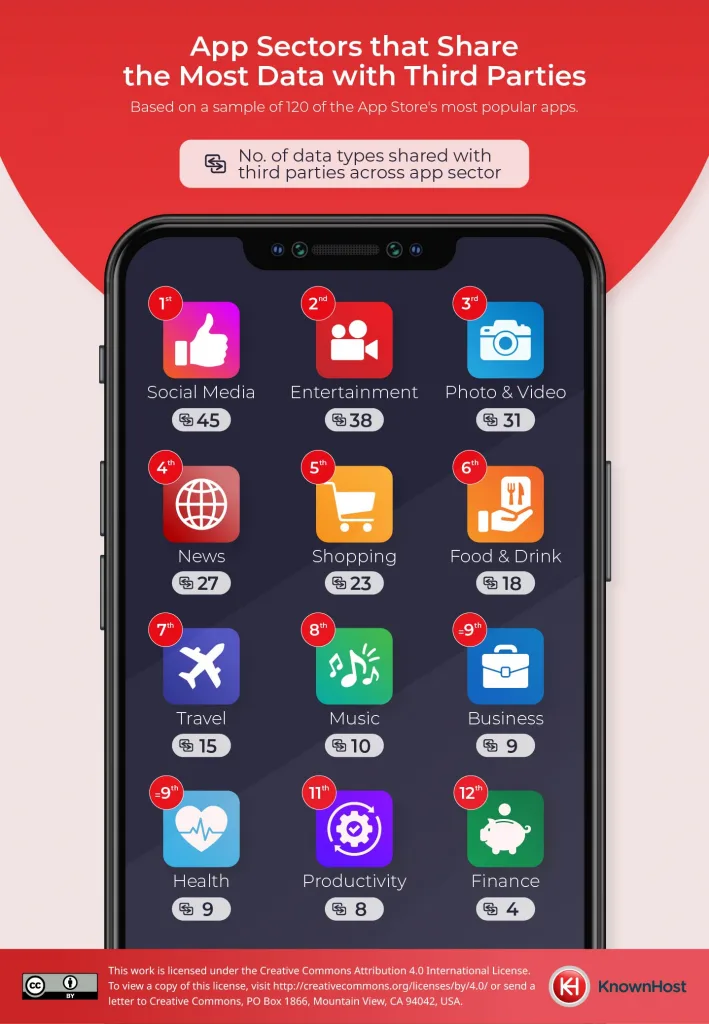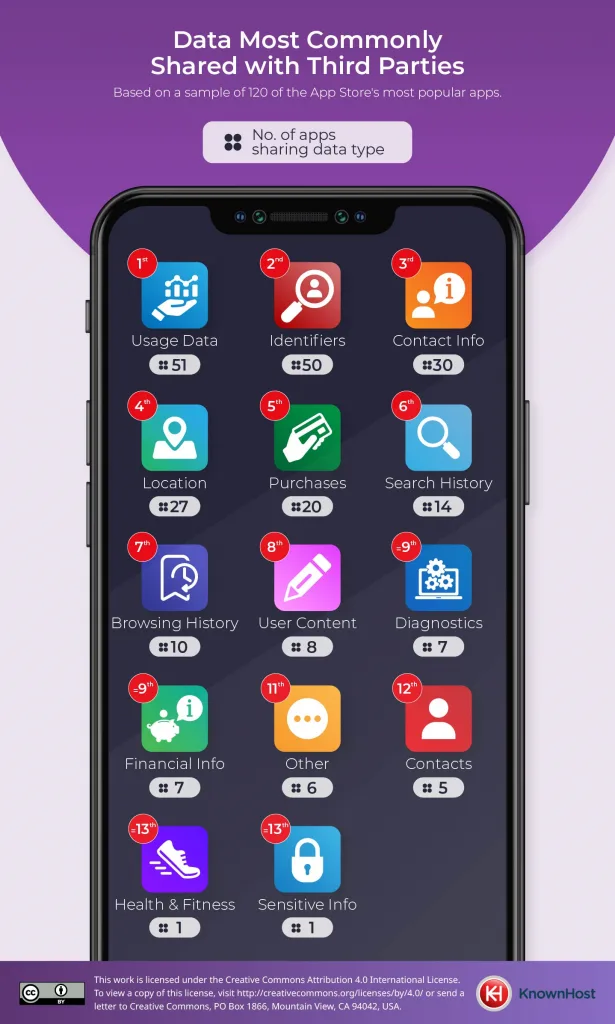Which App Sectors Share the Most Data with Third Parties?
The definition of third-party data sharing is the transfer of data that has been collected from individual users across platforms and sites, that is exchanged between organizations distinct from the original users and data collectors.
There are advantages and disadvantages to sharing with third parties. It can improve innovation and insight into customer behaviors but can also become damaging due to the potential of data breaches, along with lack of control and traceability issues. There are also further risks with third parties and the unknown difference in protocols over how data is handled and used. Therefore, it is important to check how your data is being managed when downloading applications and how to mitigate dangers that could be faced.
To learn the extent of third party sharing across phone apps, KnownHost have conducted an in-depth study, looking into specific app sectors and which types of data are the most likely to be shared.
App Sectors That Share the Most Data with Third Parties

Across the 12 sectors that were used in this study, Social Media apps are the most likely to share data with third parties. Across the ten apps that represented the sector in the study, 45 types of data are shared with third parties, which is over ten times the amount of data shared by Finance apps.
Entertainment apps are the second most likely sector to provide data to third parties, with 38 data types being shared across ten apps. The third most likely sector is Photo & Video, which shares 31 types across 10 apps. Arguably, these three sectors are some of the most popular for downtime for any individuals, but there is a high probability of app usage being surveyed without knowledge.
Data Most Commonly Shared with Third Parties

On the App Store, there are 14 different types of data that can be collected from an individual’s phone when using different apps. Across the 60 apps used in the study, 51 shared Usage Data with third parties, which includes the events of a user across an app, such as duration, number of times it is opened and user engagement.
The second most likely data to be shared is Identifiers, which can be as personal as tracking unique devices owned by the user. Contact Information is shared to third parties across 50% of the apps, predominantly across Entertainment apps, which often is distinctive information, such as email addresses, that can then be potentially targeted for unwanted communication.
Conclusion
As concerns continue growing about the possibility of data breaches, the need for individuals to do their own due diligence has become more crucial. Checking how software and applications use your data is usually explained within the privacy section, and it will often show whether the third parties are advertisers or another entity.
Furthermore, it is clear that popular apps share more data with third parties than expected, yet some specific sectors are unlikely to accrue data, so it is always worth ensuring that your data is safe when using any platform.
Methodology
For this study, data was sourced from the official Apple App Store (U.S.) for the 10 most highly rated or well-known apps across 12 sectors. For the third-party advertising data, this was collected from the data privacy section of the app description and each app was ranked on how many data points it collects and shares with third parties. The sector totals are the sum of the data points shared with third parties by the 10 apps contained within.
Definitions of the types of user data collected can be found on the App Store here:
https://developer.apple.com/app-store/app-privacy-details
If you’d like to view the full data, you can do so here.